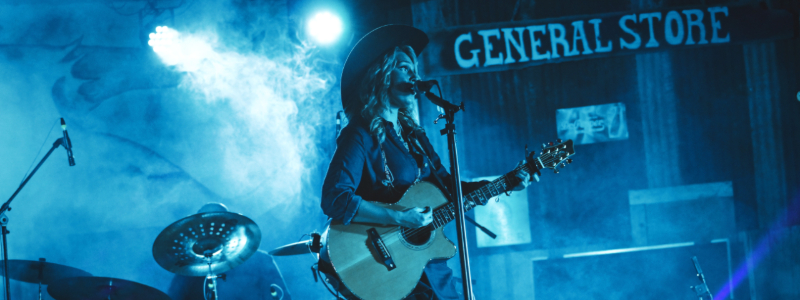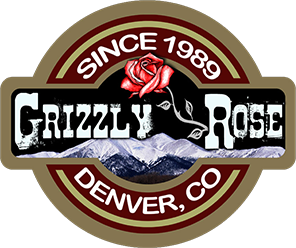The Difference Between Folk and Country Music
If you’re like us, you have a wide range and an eclectic taste in music. Everything from rock to soothing instrumentals, we love all of it! Our particular favorite genre, however, has always been country. For many reasons, including captivating stories, upbeat rhythms, and all-around fun dancing we tend to choose Country above the rest.
But among genres, have you ever noticed their similarities? As the decades progress, music genres also evolve. Perhaps that’s why there’s such a striking similarity between the lyrical folk music of the past and present-day country. After all, folk used to be widely considered country music. Is it still? We thought it’d be fun to take a look! Below we’re discussing the difference between folk and country music.

What is Country Music?
Country music has its roots in the American southeast and west. Its stories tell tales of lonely cowboys, lost cattle, love gone wrong, and hard-drinking at the local saloon.
Originally, country music was accompanied largely by string-instruments: the acoustic guitar, the banjo, the upright bass, and the mandolin. Country vocals are simple ballads, danceable tunes, or melancholy romance. Harmony—if present—is simple often involving only two or three voices.
What is Folk Music?
Here’s another difference between country and folk music. While county music is an offshoot of folk, there are disparities in origin, sound, and theme.
Folk music started in the eighteen hundreds. American folk songs have origins in the Revolutionary and Colonization period when settlers from the British Isles came to America.
Traditional ballads like “Barbara Allen” were passed down by the immigrants to their children. They were also introduced to their new country.
Folk music is unique to an area and universal within that community. Folk singers often weren’t trained. They often played whatever instruments they had at their disposal.
Folk also extends into the twentieth century when a new type evolved. It was called the second wave of folk music or the folk revival. Folk music had its heyday in the 1960s.

Similarities between the Two
Origins
Both folk and county music are rooted in stories of the working class. They are the music of blue-collar Americans. Both genres blended styles from Irish Celtic melodies and English tunes.
Sounds
Folk music and traditional country music sound a lot alike. Both have a repetition of simple melodies. Both have lyrics that tell stories. Both use repetition of a catchy chorus or even a memorable phrase to engage their audiences and tempt them to sing along.
Rhythm
Just as chords and melodies for folk and country were simple, so, too rhythms were easy to tap, clap, and play spoons too. Easy regular rhythms encourage listeners to participate.
Instruments
Both folk and country instruments often included strings like a guitar, fiddle, upright bass, and mandolin. In addition, folk groups often used whatever they could find. So, a folk group might have someone playing spoons or a washboard, or a washtub bass.
While country music shares the stringed instruments of folk singers, they added steel and electric guitars, dobros, and often percussion instruments.
Artists
A number of musicians dabbled in both folk and country. Examples include
- Carter Family
- Jimmy Rogers
- Roger Miller
- Woody Guthrie
Emmylou Harris, Mary Chapin Carpenter, Willie Nelson, and Johnny Cash also recorded both folk and country. Jewel started in country but also sings folk and pop. BJ Thomas, Brandi Carlyle, and Lucinda Williams are pop singers who also sang country.

Differences between Country and Folk Music
Folk music’s breadth is far wider than country. In essence, country is one part of folk. It is a unique style of folk music.
Folk music—even in its second wave—didn’t stray from its pure form. Country, on the other hand, has muddied the waters between country and pop and even ventured into rock.
Artists
While there were some crossover artists, most famous folk singers stayed true to their genre. So, folk genre claims such big names as Kris Kristofferson, Linda Ronstadt, Mama Cass Eliot, Joanna Newson and groups like The Kingston Trio, Peter, Paul, and Mary, The Limelighters, the Weavers, Crosby, Stills, and Nash and The Mamas and the Papas.
Big names in country included: Hank Williams, George Jones, Dolly Parton, Gene Autry, Barbara Mandrel, Eddie Arnold, Reba McIntire, BJ Thomas, George Strait, Kenny Rogers, Johnny Cash, Patsy Cline, and Loretta Lynn.
Themes
A country songwriter once quipped country songs were about: mama, trains, trucks, prison or getting’ drunk. He wasn’t off the mark. If you add religion, patriotism, the south, loving and losing, sexy women, feeling lonesome, red-neck life, and yearning for the past, you about have it.
Folk themes include protest songs like those of Bob Dylan, historical events like “The Wreck of the Edmund Fitzgerald” by Gord Lightfoot, and the war songs of Johnny Horton. Other folk songs captured nostalgia for places or ways of life lost like “Shenandoah”, “My Old Kentucky Home”. Many folk songs are work songs. These include sea chanties, railroad songs, and cowboy songs.
Folks songs address current issues like slavery, war, backbreaking jobs, social unrest, and political issues. A good example is “Ohio” written about the Kent State shootings by Neil Young.
Folk songs often take on a regional flavor. Examples include Cajun music, songs of the South and Texas-southwest songs. Appalachian and Midwest folk songs are also regional folk music.

Sounds
Folk songs use acoustic instruments. They often rely on found instruments to establish a beat. These might include sticks, spoons, washboards, food stamps, handclaps, and finger snaps. Additionally, folk songs change from generation to generation largely because they were passed on orally. Other key sounds of note:
- Folk songs have several verses with an easy-to-remember chorus sung between each.
- Aptly, folk songs were written for the common folk.
- Country music may have a story to tell but it is less likely to be a protest.
- Country music often consists of ballads and Texas two-step and line-dance tunes. The harmony is simple and the sounds often include banjos, electric guitars, steel guitars, acoustic guitars, fiddles, dobros and even harmonicas and Irish whistles. Tunes can range from haunting to sprightly.
Rhythm
Folk was light rhythm instrumentation while country can often involve a powerful drum part.
Conclusion
What is the difference between folk and country music? Both folk songs and country music have roots in early Appalachian music. The difference between the two have become both less and more.
Folk and country crossover artists have dotted the line between the two. Instrument changes have blurred differences too.
However, with country moving more and more toward pop, it is often hard to tell country is still country—or is it? Examples include the complicated melodies and big sounds of artists like Tim McGraw, Taylor Swift, Carrie Underwood, and Shania Twain. Even long-time country singers like Reba McIntire and Kenny Rogers are using full orchestra background music.
What the difference between folk and country music, we invite you to come to enjoy this amazing genre of music! Visit the Grizzly Rose in Denver.



